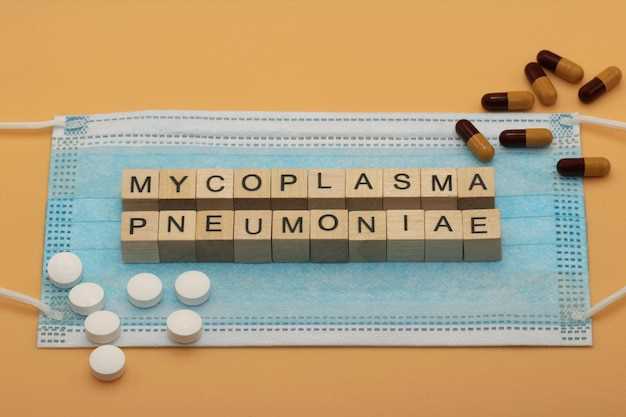
Metronidazole can cause yeast infection, but you can prevent it with our effective solution. Say goodbye to discomfort and itching with our specialized product. Don’t let side effects ruin your day – try our solution now!
Understanding Metronidazole
Metronidazole is an antibiotic medication commonly used to treat various bacterial infections. However, it’s important to be aware that metronidazole can also disrupt the balance of bacteria in the body, leading to an overgrowth of yeast and potentially causing a yeast infection.
Yeast infections are common side effects of metronidazole, especially in women, as the medication can alter the vaginal flora. It’s essential to understand the risk of developing a yeast infection while taking metronidazole and to be aware of the symptoms to watch out for.
Consult your healthcare provider if you experience any signs of a yeast infection while on metronidazole, as they can provide guidance on prevention measures and appropriate treatment options.
Yeast Infection Risk
Yeast infections can be a common side effect of taking Metronidazole. This medication can disrupt the natural balance of bacteria and yeast in the vagina, leading to an overgrowth of yeast known as Candida. Women are particularly at risk of developing a yeast infection while taking Metronidazole.
Factors that can increase the risk of yeast infection include:
- Antibiotic Use: Metronidazole is an antibiotic that can kill off the good bacteria in the body, allowing yeast to multiply.
- Weakened Immune System: Individuals with weakened immune systems are more susceptible to yeast infections.
- Pregnancy: Hormonal changes during pregnancy can make women more prone to yeast infections.
- Diabetes: Poorly controlled diabetes can increase the risk of yeast infections.
It’s important to be aware of the signs and symptoms of a yeast infection while taking Metronidazole and to seek medical attention if you suspect you have developed one.
Symptoms to Watch For
When taking Metronidazole, it’s important to be aware of potential symptoms of a yeast infection. Some common signs to watch for include:
- Itching and irritation in the genital area
- Redness and swelling
- Pain or discomfort during urination or intercourse
- Thick, white vaginal discharge with a cottage cheese-like texture
If you experience any of these symptoms while taking Metronidazole, it’s essential to consult with your healthcare provider for proper diagnosis and treatment. Taking preventive measures can also help reduce the risk of developing a yeast infection while using this medication.
Treatment Options

When it comes to treating yeast infections caused by Metronidazole, several options are available:
1. Antifungal Medications

Antifungal medications such as fluconazole or miconazole may be prescribed to help clear up the yeast infection. These medications are available in various forms, including oral tablets, creams, and suppositories.
2. Probiotics
Probiotics can help restore the balance of good bacteria in the body, which can be disrupted by Metronidazole treatment. Consuming probiotic-rich foods or taking probiotic supplements may help prevent or treat yeast infections.
It’s important to consult with your healthcare provider before starting any treatment to ensure it’s the right option for you.
Treatment Options
When it comes to treating yeast infections caused by metronidazole, there are a few options available. Here are some common treatment methods:
1. Antifungal Medications
Antifungal medications, such as creams, ointments, or suppositories, are often prescribed to treat yeast infections. These medications work by targeting the yeast that is causing the infection and helping to restore the balance of bacteria in the affected area.
2. Oral Medications
In some cases, oral antifungal medications may be prescribed to treat more severe yeast infections. These medications are taken by mouth and work to fight the yeast infection from the inside out.
| Treatment Method | Description |
|---|---|
| Antifungal Medications | Topical creams, ointments, or suppositories that target the yeast infection. |
| Oral Medications | Medications taken by mouth to combat yeast infection internally. |
It’s important to consult with your healthcare provider before starting any treatment for a yeast infection. They can provide guidance on the best course of action based on your individual situation and medical history.
Consultation with Healthcare Provider
When experiencing any symptoms or concerns related to Metronidazole or yeast infections, it is crucial to seek advice from a healthcare provider. Consulting with a healthcare professional can help in determining the appropriate course of action, whether it involves adjusting the dosage of the medication, exploring alternative treatment options, or addressing any underlying health issues contributing to the condition.
Healthcare providers are trained to assess individual health needs and provide personalized recommendations based on the specific situation. They can offer guidance on managing symptoms, preventing recurrence, and ensuring overall well-being during treatment.
Remember that self-diagnosis and self-medication can lead to adverse outcomes. Seeking professional advice ensures safe and effective management of any health concerns. Schedule a consultation with your healthcare provider to address any questions or challenges related to Metronidazole or yeast infections promptly.
